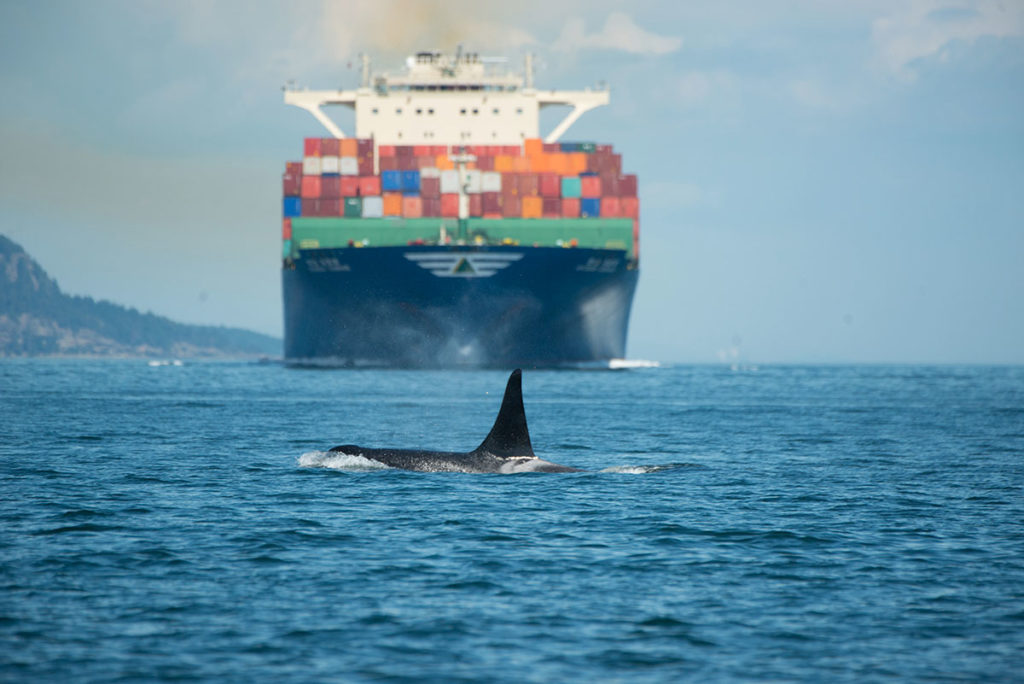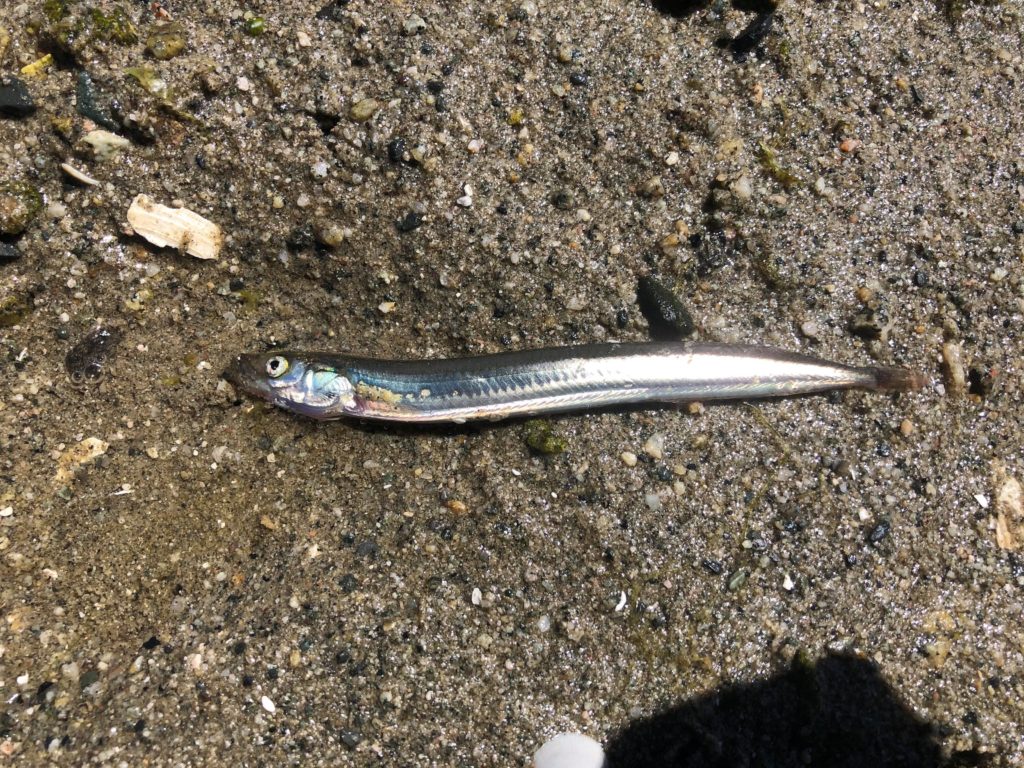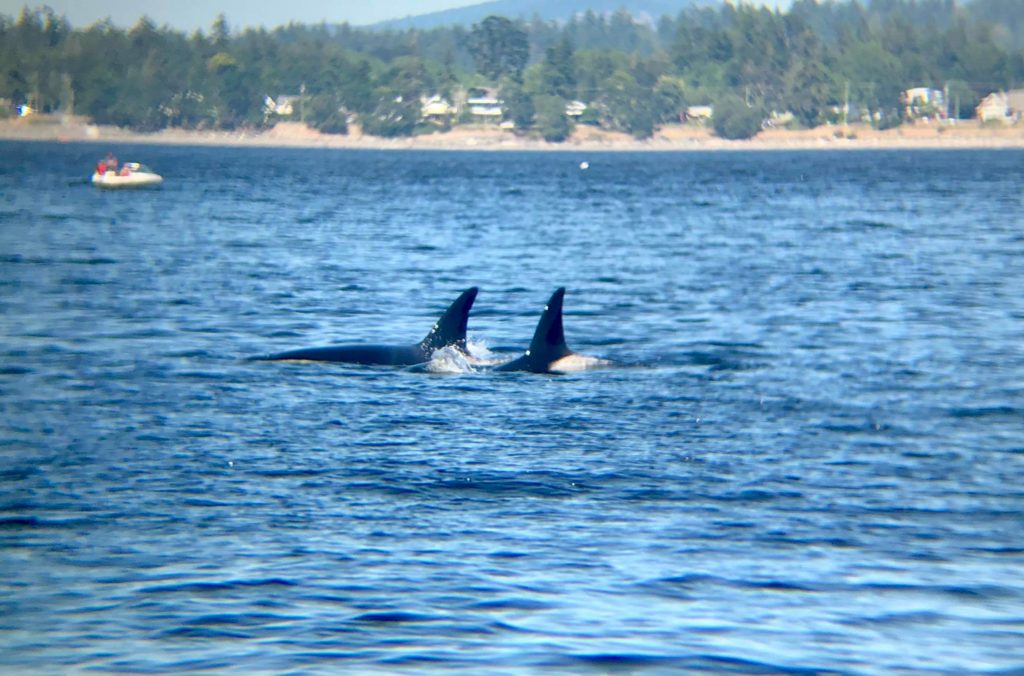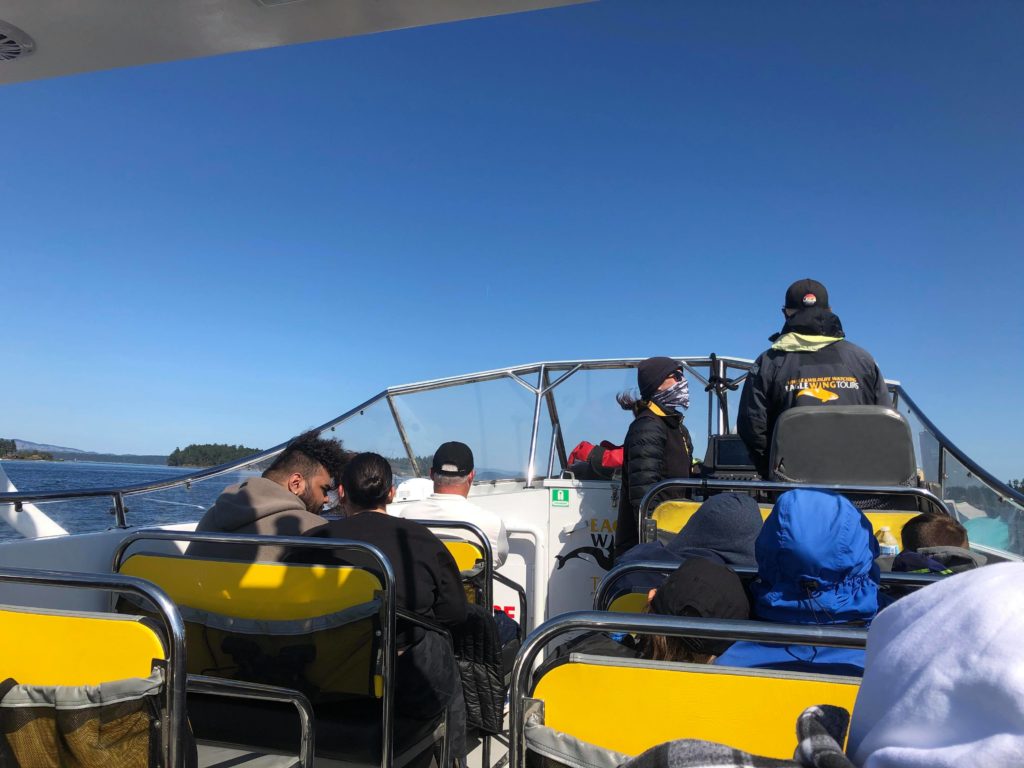by Carmen Pavlov, Environmental Support Technician
Living near the Salish Sea brings a diverse range of wildlife to our doorstep, including seabirds, intertidal critters, fish, and the charismatic orca (Orcinus orca). Orcas in BC are classified into three groups: residents (Northern and Southern), transients, and offshores. All three have distinct diets, social/family groups, hunting strategies, and habitat preferences. Southern Resident Killer Whales (SRKW) are the most endangered of these three groups, with only 74 remaining. There are three pods in the SRKW group: J, K, and L.
There are three broad categories of threats facing the SRKW:
- Access to food—dwindling numbers of Chinook salmon (primary food source).
- Chemical pollution in the water—things like PCBs accumulate in fatty tissue, milk, and endocrine systems of orcas, causing health complications or even the death of their offspring.
- Noise pollution—boat noise impacts the function of SRKW echolocation.
To aid in the recovery of the SRKW population, research, monitoring, and education on all aspects of orca habitat and life histories are critical in creating strong protective measures.

Although it may appear unrelated at first glance, forage fish play an important role in the health of both Southern resident and transient orcas. Pacific sand lance and surf smelt are two types of local forage fish that spawn on intertidal sand-gravel beaches. Although they're small, they're mighty, being a primary food source for Chinook salmon, seals, and sea lions. Simply put, orcas would not survive without forage fish. Therefore, keeping accurate records of forage fish populations can aid in determining the health of orcas' food sources in the hopes of maintaining strong orca populations. To contribute to this, PSS has been running the BEACH Program in the Capital Regional District since 2018. The program collects data on the presence of sand lance and surf smelt spawning beaches in the area, identifying sites that require restoration or protection.

Due to dwindling Chinook salmon populations, the SRKW pods are venturing further out of their traditional range in search of food. According to a recent press release from the Orca Behaviour Institute, July 19th marks the 100th day since the Southern resident J-Pod last visited the Salish Sea. May through September used to be peak season for J-Pod, K-Pod, and L-Pod, with the area serving as their core summer habitat. Observers report that none of the three Southern resident pods have followed Chinook salmon migrating to the Fraser River on their usual summer route. This change illustrates the perilous state of the Salish Sea and Fraser River ecosystems.
The absence of the Southern residents has resulted in more ‘room’ for transient orca pods, like T046B, in and around the Greater Victoria region. With the area already stocked with seals, sea lions, and porpoises, the transients are doing well and enjoying full meals! Although this is good news for the transients, the SRKW continue to face hardship and hunger.

Helping support education in the hopes of better orca protection measures is Eagle Wing Tours, a local whale watching company who are on a mission to inspire those who go out on their boats.
Eagle Wing Tours first opened its doors in 1997, with current owners Brett Soberg and Don Stewart taking charge in 2005. Brett and Don were both inspired to create a whale watching company in an environmentally conscious manner, with sustainability at the heart of all business operations.
Since then, Eagle Wing Tours has helped set the standard for ecologically conscious whale watching. However, the company still wishes there were more solid protection measures for whales and adjacent wildlife, mentioning that “unfortunately, as is the case with many things in life, government often lets politics and optics distract them from true conservation measures that will effectively protect the whales and their environment. Many government protections are in place to simply appease certain groups without the science to back them up and without the actual well-being of the whales at heart".
Despite the lack of strong whale protection laws, Eagle Wing Tours engages in a number of conservation projects, including 1% for the Planet, which donates to a number of registered charities. Additionally, in 2013, they became the first whale watching tour operator in Victoria to implement a wildlife conservation fee, and between this, the 1% for the Planet, and their carbon offsets, they’ve donated over $650,000 since 2011 to 29 conservation organizations within the boundaries of the Salish Sea, including $5000 in 2020 to PSS for our BEACH Program!
Eagle Wing Tours also runs the Wild 4 Whales Foundation, a non-profit that supports cetacean and other marine life research, advocacy, and education in the Salish Sea and beyond. In local schools, the company runs a floating classroom program, educating and inspiring students on the marine world. Through these means, Eagle Wing Tours presents and provides a space for well-researched information to be delivered to guests, students, and researchers alike, inspiring action towards better protection.

The preservation of healthy orca populations necessitates the maintenance of a healthy marine environment. Given the downward trend in SRKW and Chinook salmon, research and education are critical, which is why PSS hopes to contribute to the SRKW's well-being by determining the biology and life histories of Chinook salmon's food sources. With organizations such as Eagle Wing Tours standing behind non-profit work in the form of donations, education, inspiration, protection, and in the creation of meaningful connections, there is hope that the tides may begin to turn, and the SRKW return to frequenting the waters of the Salish Sea again. As Baba Dioum once said, “We will conserve only what we love; we will love only what we understand; and we will understand only what we are taught". This quote is what inspires and drives Eagle Wing Tours forward, with Brett stating that “no matter where people are from, we have a collective responsibility to care for and protect our oceans!”.

The problem with whale watching is capitalizing on whale’s for commercial gain. As an educational tool watching Black Fish suffices. Too much noise and interference for the Orcas already, and the “education” factor is limited to paying customers. Whale watching is only a few steps above places like SeaWorld, and we should not have the right to exploit any living creature.
Education is the key even if it has to be hands on. As long as the teaching is done in a respectful manner towards marine wildlife, it may be the only effective way to engage individuals. Let’s face it, humans have a short memory span. First hand knowledge is the most effective. Just ask any expert in the field.